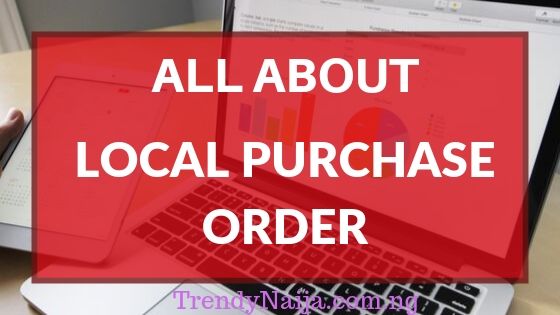
If you’ve worked in a corporate environment or in the financial or supply industries, you’ll be acquainted with purchase orders. Regardless of whether you deal with them on a daily basis or it’s only a phrase you’ve gotten in your notification every now and then, the amount you may know will vary yet there’s still more to find out about the purchase order process.
They may appear to be an extra level of bureaucracy that has been invented by somebody fixated on paperwork and particular processes, however they assume an immensely significant role in how businesses operate and we’ll demonstrate why here, alongside everything else you have to know.
What is a Purchase Order?
A purchase order (PO) is a document issued by a buyer to the seller, giving the information about the details of the order. That is the quantity, type of product, prices, and so on. You may ponder, “what’s the difference between a purchase order and an invoice? It is not a misconception to have on the grounds that the two of them include a customer and a supplier orchestrating payment for products or services.
Be that as it may, the key difference is in the timing, as a purchase order (as the name recommends) is utilized toward the beginning of the process to frame a legal contract among supplier and customer and spread out the details of exactly what the supplier will be required to deliver. An invoice is created toward the end of the process by the supplier, utilizing the information from the purchase order to request the agreed payment from the customer.
Formats
- Electronic purchase orders – Many purchase orders are no longer paper-based, they are rather transmitted electronically over the Internet. It is normal for electronic purchase orders to be utilized to buy goods or services of any type online. There are loads of names/terms for Electronic Purchase Orders. It is at times known as: E-Procurement, E-Purchasing, E-Purchase Requisition, etc. These terms are normally all alluding to Electronic Purchase Orders.
- Non-electronic purchase orders – The record of purchase order in many business firms are still on paper and consequently there is a requirement for appropriate purchase order design. Numerous users wish to have professional formatting for purchase orders for a few reasons.
A company may wish to have a solid comprehension of purchase transactions or to know the basic requirements of purchase order. It might likewise make it part of business documentation, which makes the process easier while keeping record, all things considered and to have great impression on the client or customer.
What Does A Purchase Order Contain?
Here are a portion of the essentials that a purchase order tends to contain:
- PO number (which is then referenced in the invoice to connect the two documents, something that is especially significant for finance departments in huge companies)
- Contact information for the customer
- Payment information
- Description and quantity of goods/services ordered
- Invoice and delivery address (if unique)
What Is The Purchase Order Process?
There are a number of stages associated with the purchase order process. These can vary from company to company, however the ones listed below are the most usually utilized:
- Purchase Requisition is created – This happens in the company making the purchase. The individual responsible for the purchase request approval from finance and line managers to go ahead with the purchase.
- Purchase order is sent – Assuming the first stage doesn’t end with a firm ‘no’, the purchase order is created and sent to the supplier, detailing what is needed and giving the information the supplier will require when creating their invoice.
- Supplier approves purchase order – Again, this assumes the supplier is happy with the purchase order they have received. When they have reviewed it they will acknowledge receipt and acceptance of the order.
- Buyer records purchase order – Now that the binding contract has been agreed, the purchasing company will officially record the purchase order and the supplier will begin to do what is expected of them to satisfy the order.
What Is The Purchase Order Process Used For?
The purchase order process has numerous purposes more than the direct role of acting as the initial agreement of what work will be done by the supplier. Here are ways that utilizing purchase orders will benefit your business:
- Budgeting – Especially in companies where there are consistent streams of income and expenditure flowing through the finance departments, purchase orders are essential to guarantee that there are no nasty surprises when invoices come in. Without the purchase order process, an invoice for $1m could arrive, demanding payment within 30 days, and the finance office could have had no warning that it was due, making it difficult to find the money to make payment. With a purchase order, they will have had the option to make proper budget for it in advance, and that works the other way around as well, as the finance staff at the suppliers are able to know that payment will come in even before the invoice has been sent.
- Managing Orders and Expectations – Just as having the option to forecast what the budgets will be, the purchase order process can enable suppliers to track incoming orders and oversee inventory levels with knowledge of what is normal. Purchase orders are an unchangeable way of agreeing on these expectations at the two ends of the supply workflow, so the suppliers know what they will supply and can prove that it is what was requested if there are any disputes, and vice versa.
- Evidence For Financial Audits – In some smaller businesses, orders can be placed and recorded on scraps of paper, which may work fine for their internal processes, yet isn’t the sort of solid and substantial evidence required for a financial audit. Utilizing purchase orders demonstrates a healthy flow of orders and income or sensibly-oversaw expenditure and is an excellent way to prove to auditors, banks and tax agencies that your business is doing things the correct way.
- Legally Binding Contract – When a purchase order has been sent and accepted by the supplier, it goes about as a legally binding contract between the two parties, so if a dispute emerges and there is any inquiry of payment or goods/services being withheld, the contract between them is clear. Anybody acting as arbitrator or mediator between parties in dispute has a document detailing exactly what has been agreed, and it ought to be anything but difficult to reach an agreement.




